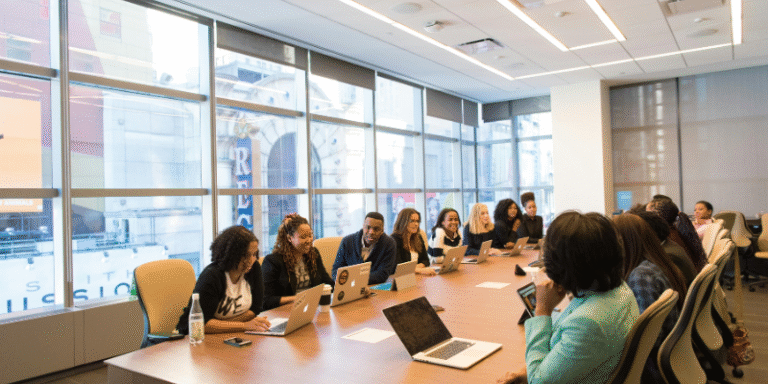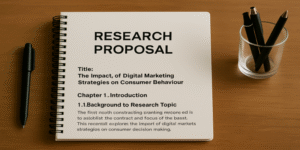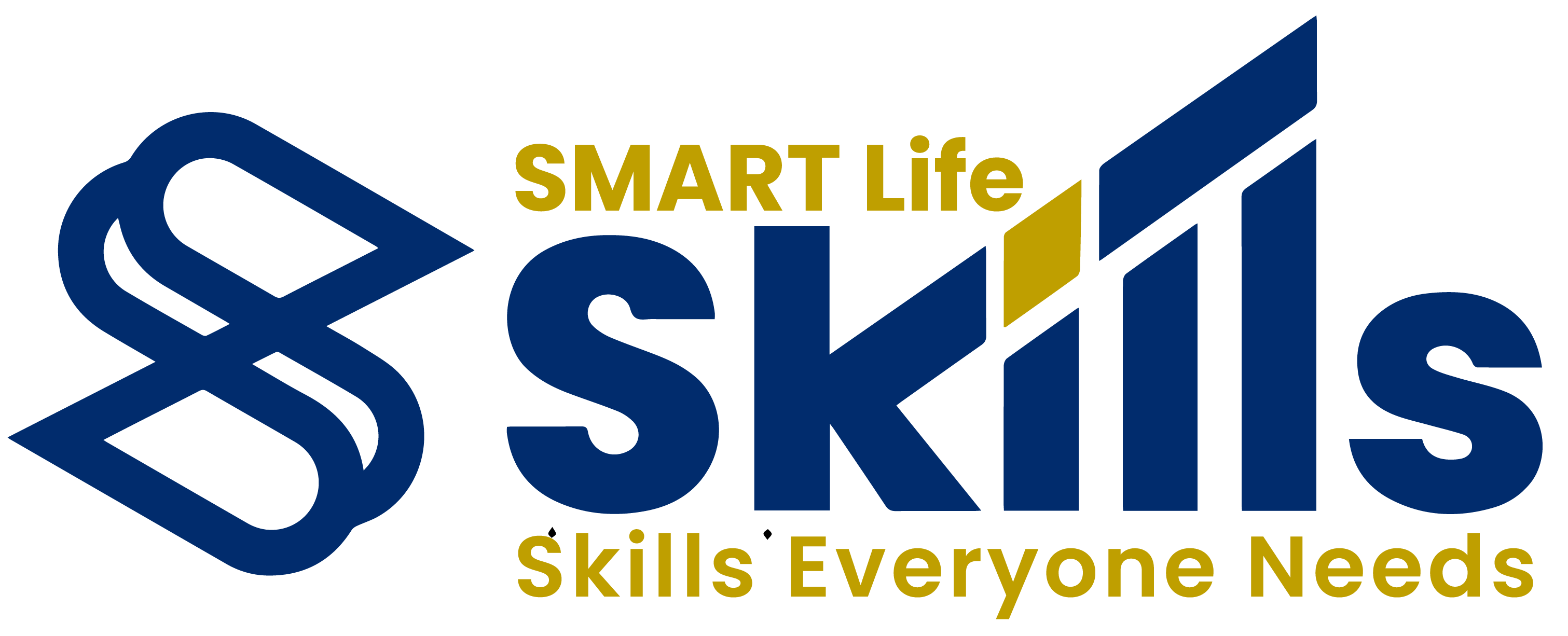In today’s fast-paced work environment, meetings remain a cornerstone of organisational communication. However, the challenge of staying present and engaged during meetings is one that many professionals grapple with. Disengagement, whether due to distractions, unclear objectives, or fatigue, can diminish meeting productivity and individual well-being. This article explores the psychological, behavioural, and technological factors that help individuals remain attentive and involved in meetings, referencing relevant academic literature, textbooks, and credible online sources.
1.0 The Importance of Engagement in Meetings
Being present and engaged in meetings is not only essential for achieving organisational goals, but also for fostering collaboration, creativity, and job satisfaction (Lehmann-Willenbrock et al., 2017). Engagement entails more than physical presence; it includes mental attention, emotional investment, and active participation.
According to Kahn’s (1990) foundational work on personal engagement, individuals are more likely to be engaged when they find the meeting context meaningful, feel psychologically safe, and believe they are contributing to a valued outcome. Without these elements, disengagement can occur, resulting in lost time and reduced team morale.
2.0 Cognitive and Psychological Strategies
2.1 Mindfulness
Mindfulness—defined as the psychological process of bringing one’s attention to the present moment—has been widely linked to increased concentration and emotional regulation (Brown & Ryan, 2003). Practising mindfulness before or during a meeting, such as taking a few deep breaths or conducting a brief meditation, can enhance focus and reduce stress.
Research by Hülsheger et al. (2013) found that employees who engaged in mindfulness practices reported improved attention and less emotional exhaustion during workplace tasks, including meetings. Mindfulness-based interventions can thus be useful for both individuals and teams.
2.2 Goal-Setting and Preparation
Preparation increases engagement by giving individuals a clear understanding of the meeting’s objectives and their expected contributions. Locke and Latham’s (2002) Goal Setting Theory posits that specific and challenging goals enhance motivation and performance. Reviewing the agenda and jotting down key points or questions beforehand can help attendees feel more invested and less passive.
As Drucker (2006) asserts in The Effective Executive, knowing the purpose of the meeting and preparing for it ensures that individuals not only stay engaged but also drive the meeting forward with purpose.
3.0 Behavioural Techniques
3.1 Active Listening
Active listening involves giving full attention to the speaker, providing feedback, and withholding judgment. It requires conscious effort but significantly boosts understanding and engagement (Rogers & Farson, 1957).
By nodding, maintaining eye contact, and paraphrasing points for clarification, individuals can remain mentally involved. Research by Kluger and DeNisi (1996) highlights that feedback, both given and received, maintains attention and contributes to more effective interpersonal communication.
3.2 Asking Questions and Participating
Encouraging oneself to speak up, ask questions, or contribute ideas keeps the brain engaged. Participation increases ownership of the discussion and can also serve as a cue for others to engage. Edmondson (1999) stresses that psychological safety—a belief that one can speak up without fear of retribution—is key to fostering participation.
Organisations that cultivate a safe and inclusive meeting culture are more likely to see higher engagement levels across team members (Frazier et al., 2017).
4.0 Physical and Environmental Factors
4.1 Reducing Digital Distractions
Digital devices, particularly smartphones and laptops, are major sources of distraction during meetings. According to a study by Rosen et al. (2013), even the mere presence of a smartphone on the table can reduce cognitive capacity and task performance.
Strategies to combat this include keeping devices on silent or outside the meeting room, unless they are required for note-taking or presentations. Meeting leaders can model this behaviour to set group norms around attentiveness.
4.2 Ergonomics and Breaks
The physical environment plays a role in attention levels. Uncomfortable seating, poor lighting, and lack of ventilation can cause fatigue. According to Work Psychology by Arnold et al. (2016), ergonomically sound meeting spaces contribute to alertness and engagement.
Additionally, incorporating short breaks during long meetings can help reset attention. The Pomodoro Technique—a time management method that alternates focused work with short breaks—can be adapted to meetings to sustain attention (Cirillo, 2006).
5.0 Role of Technology and Meeting Design
5.1 Interactive Meeting Formats
Monotonous, lecture-style meetings are more likely to cause disengagement. Conversely, interactive formats such as workshops, round-table discussions, and breakout groups encourage participation. Synchronous collaboration tools such as virtual whiteboards and polls can also keep online meetings engaging (Waizenegger et al., 2020).
A study by Rogelberg et al. (2006) found that meeting satisfaction and engagement are significantly higher when attendees perceive the meeting to be well-structured and inclusive.
5.2 Use of Visual Aids
Visual aids such as slides, infographics, or videos can enhance comprehension and maintain interest. According to Mayer’s (2009) Cognitive Theory of Multimedia Learning, combining visual and auditory elements helps sustain attention and improve information retention.
When used appropriately, visuals support the message and offer a break from auditory monotony, which can re-engage participants.
6.0 Leadership and Facilitation
The role of the meeting leader or facilitator is crucial in setting the tone. A competent facilitator ensures that meetings start and end on time, everyone has a chance to contribute, and the conversation stays on track. Leadership behaviours, such as summarising key points, inviting quiet members to speak, and managing dominant voices, influence engagement (Burke et al., 2006).
Meetings that feel purposeful and fair promote intrinsic motivation and attentiveness among participants.
Staying present and engaged in meetings is a multifaceted challenge that can be addressed through a combination of psychological strategies, behavioural practices, environmental adjustments, and thoughtful meeting design. By cultivating mindfulness, preparing thoroughly, actively participating, and leveraging interactive technologies, individuals can not only enhance their own meeting experience but also contribute positively to team dynamics and organisational effectiveness.
Ultimately, the responsibility for engagement lies with both individuals and organisations. A conscious effort to design engaging meetings and a personal commitment to attentive presence can transform meetings from mundane obligations into productive and energising exchanges.
References
Arnold, J., Randall, R., Patterson, F., Silvester, J., Robertson, I., Cooper, C. and Burnes, B., 2016. Work Psychology: Understanding Human Behaviour in the Workplace. 6th ed. Harlow: Pearson Education.
Brown, K.W. and Ryan, R.M., 2003. The benefits of being present: mindfulness and its role in psychological well-being. Journal of Personality and Social Psychology, 84(4), pp.822–848.
Burke, C.S., Stagl, K.C., Salas, E., Pierce, L. and Kendall, D., 2006. Understanding team adaptation: a conceptual analysis and model. Journal of Applied Psychology, 91(6), pp.1189–1207.
Cirillo, F., 2006. The Pomodoro Technique. [online] Available at: https://francescocirillo.com/pages/pomodoro-technique [Accessed 17 Jul. 2025].
Drucker, P.F., 2006. The Effective Executive. New York: Harper Business.
Edmondson, A., 1999. Psychological safety and learning behaviour in work teams. Administrative Science Quarterly, 44(2), pp.350–383.
Frazier, M.L., Fainshmidt, S., Klinger, R.L., Pezeshkan, A. and Vracheva, V., 2017. Psychological safety: a meta‐analytic review and extension. Personnel Psychology, 70(1), pp.113–165.
Hülsheger, U.R., Alberts, H.J., Feinholdt, A. and Lang, J.W., 2013. Benefits of mindfulness at work: the role of mindfulness in emotion regulation, emotional exhaustion, and job satisfaction. Journal of Applied Psychology, 98(2), pp.310–325.
Kahn, W.A., 1990. Psychological conditions of personal engagement and disengagement at work. Academy of Management Journal, 33(4), pp.692–724.
Kluger, A.N. and DeNisi, A., 1996. The effects of feedback interventions on performance: a historical review, a meta-analysis, and a preliminary feedback intervention theory. Psychological Bulletin, 119(2), pp.254–284.
Lehmann-Willenbrock, N., Allen, J.A. and Belyeu, D.A., 2017. Our love/hate relationship with meetings: Relating good and bad meeting behaviours to meeting outcomes. In: The Cambridge Handbook of Meeting Science. Cambridge: Cambridge University Press, pp.383–427.
Locke, E.A. and Latham, G.P., 2002. Building a practically useful theory of goal setting and task motivation. American Psychologist, 57(9), pp.705–717.
Mayer, R.E., 2009. Multimedia Learning. 2nd ed. New York: Cambridge University Press.
Rogers, C.R. and Farson, R.E., 1957. Active Listening. Chicago: University of Chicago Industrial Relations Center.
Rogelberg, S.G., Leach, D.J., Warr, P.B. and Burnfield, J.L., 2006. “Not another meeting!”: Are meeting time demands related to employee well-being?. Journal of Applied Psychology, 91(1), pp.83–96.
Rosen, L.D., Lim, A.F., Carrier, L.M. and Cheever, N.A., 2013. An empirical examination of the educational impact of text message-induced task switching in the classroom: Educational implications and strategies to enhance learning. Educational Psychology, 33(8), pp.882–899.
Waizenegger, L., McKenna, B., Cai, W. and Bendz, T., 2020. An affordance perspective of team collaboration and enforced working from home during COVID-19. European Journal of Information Systems, 29(4), pp.429–442.









